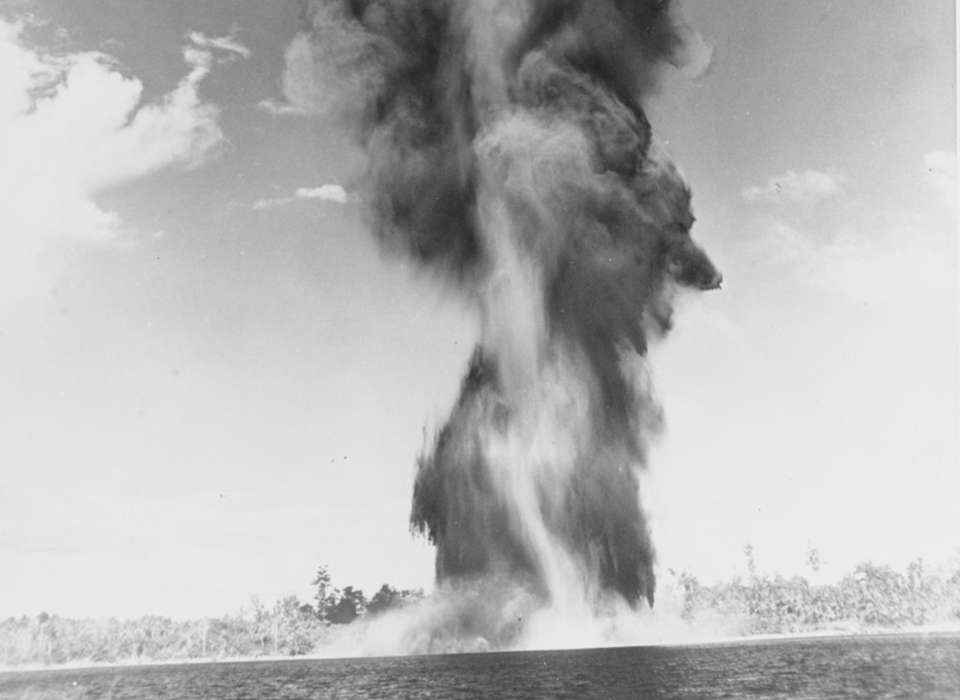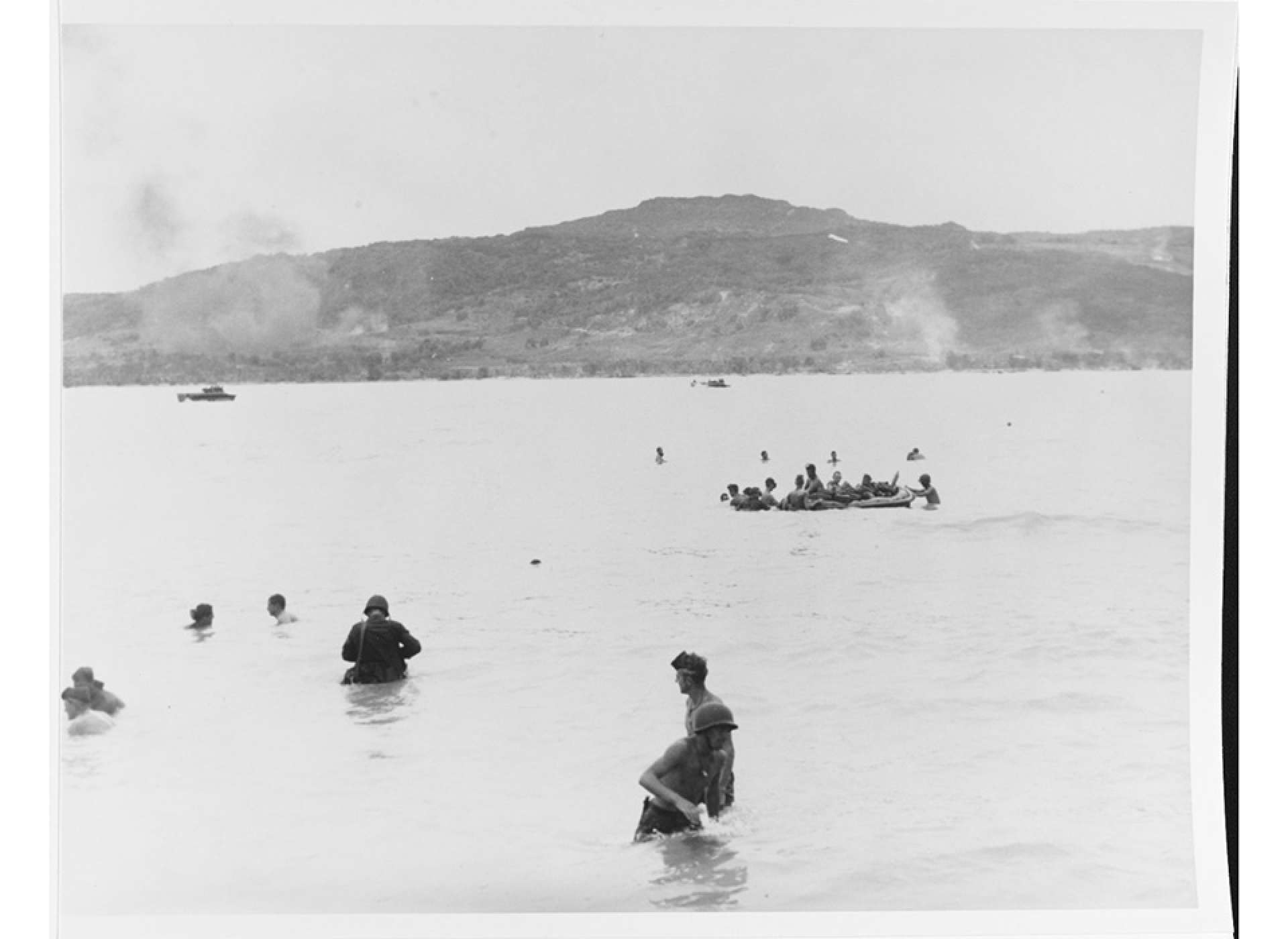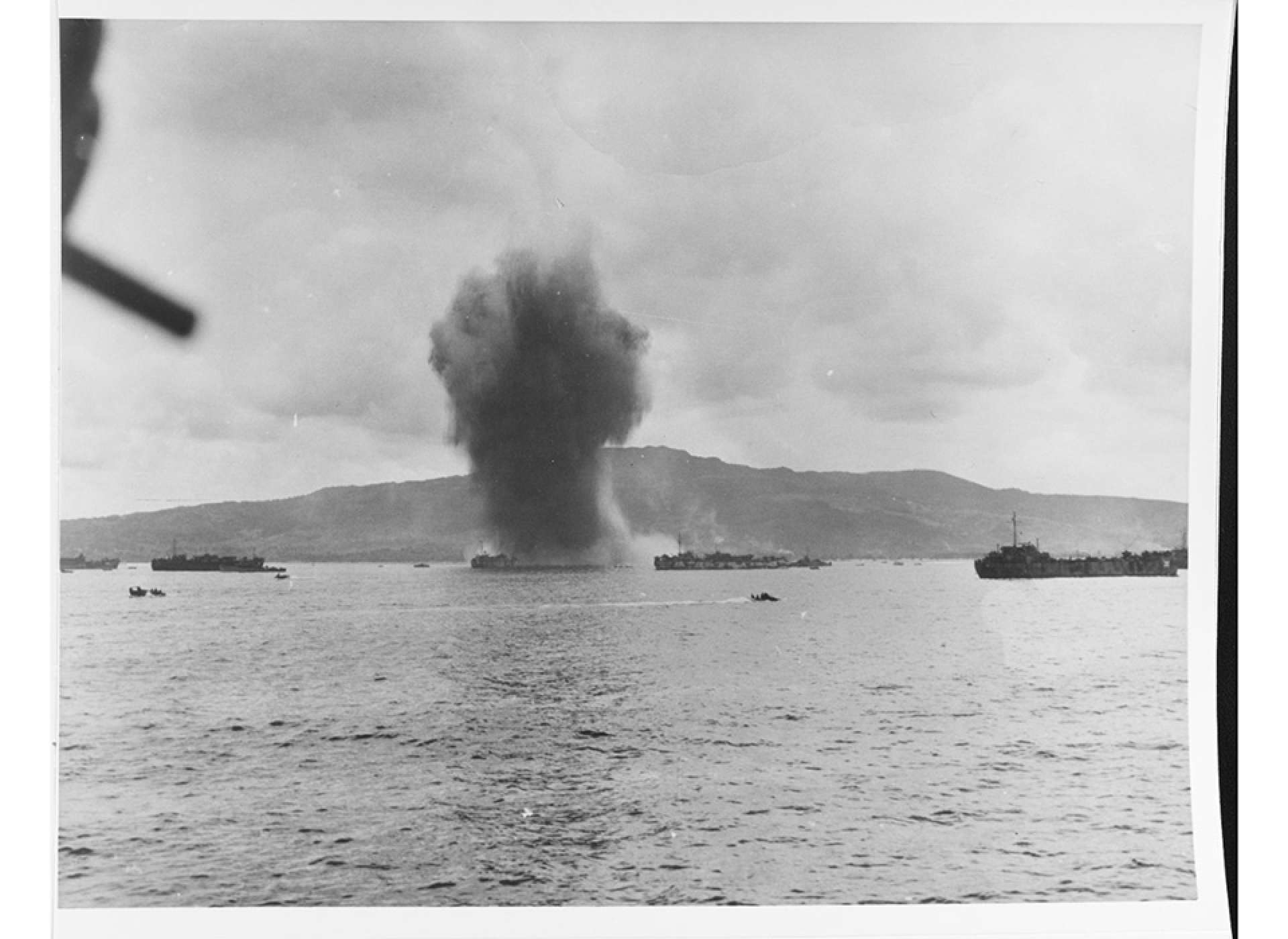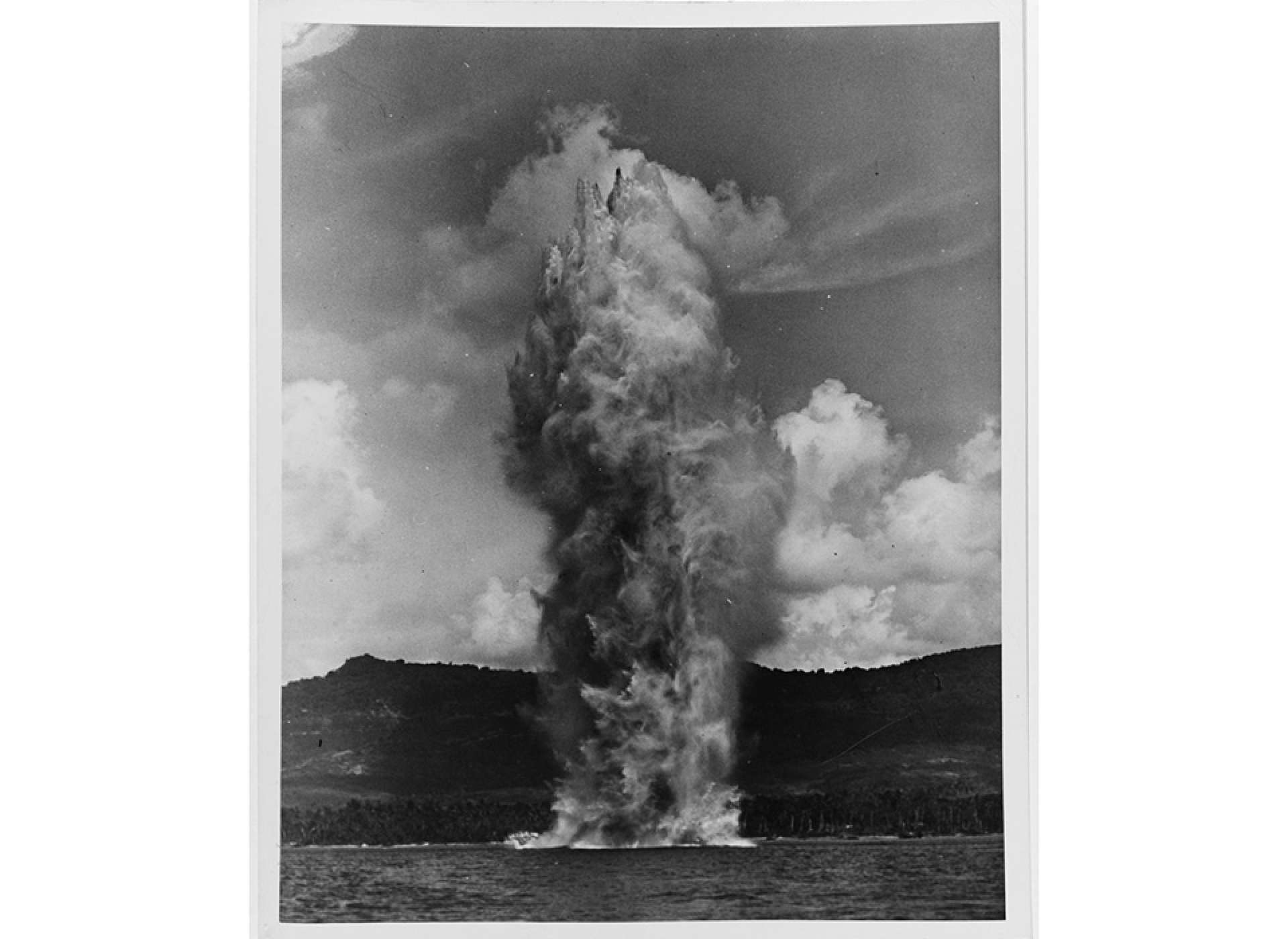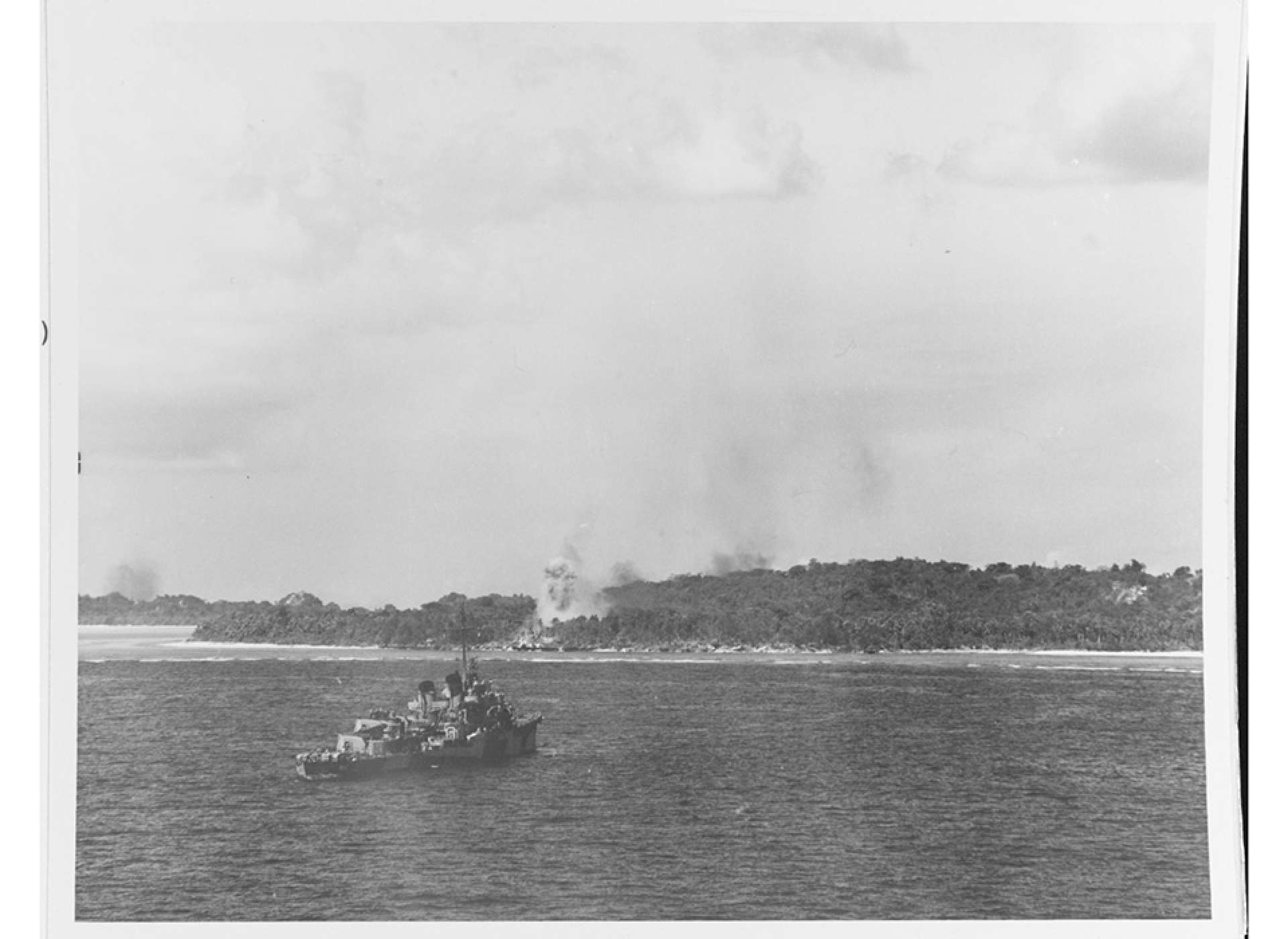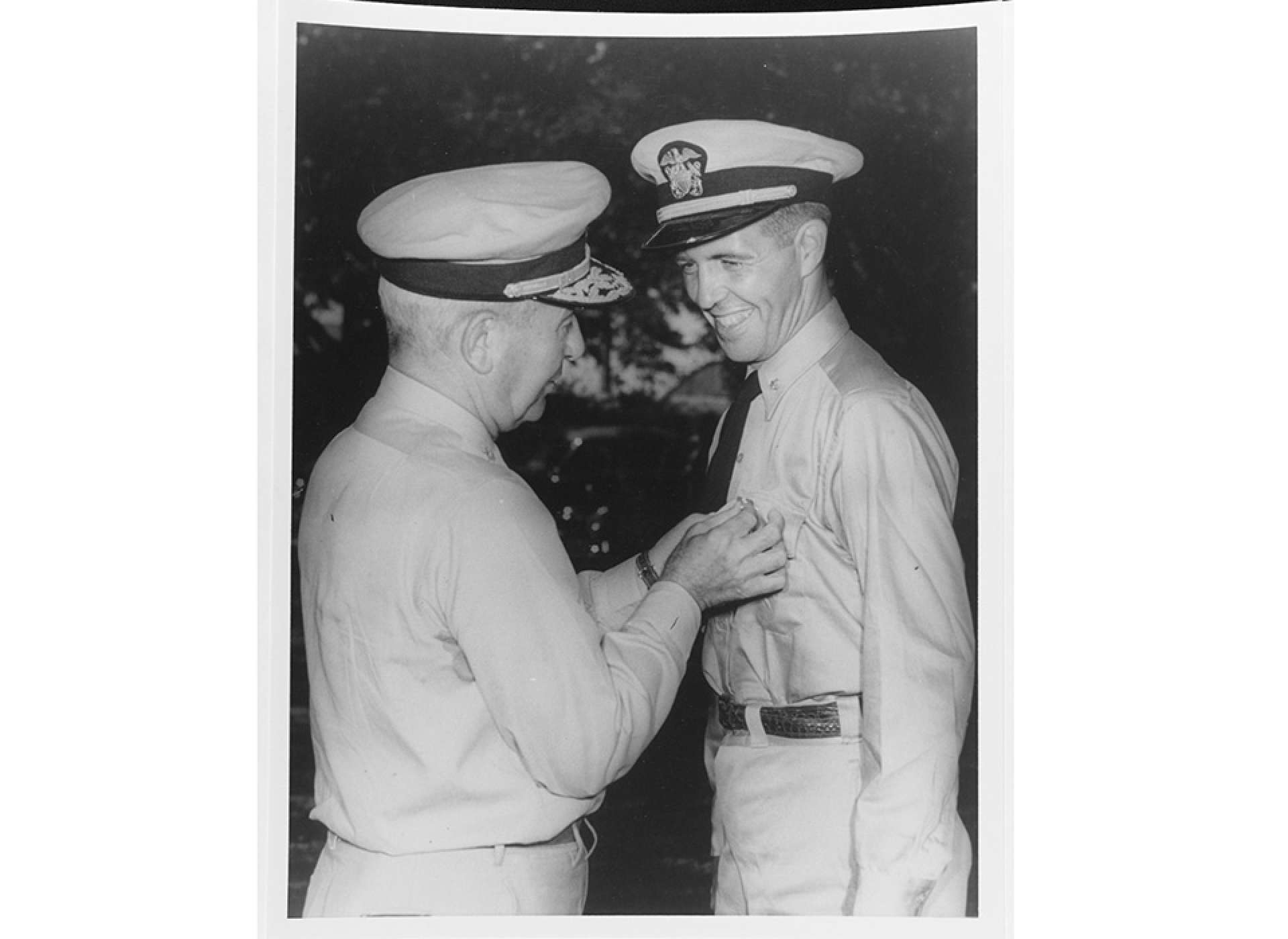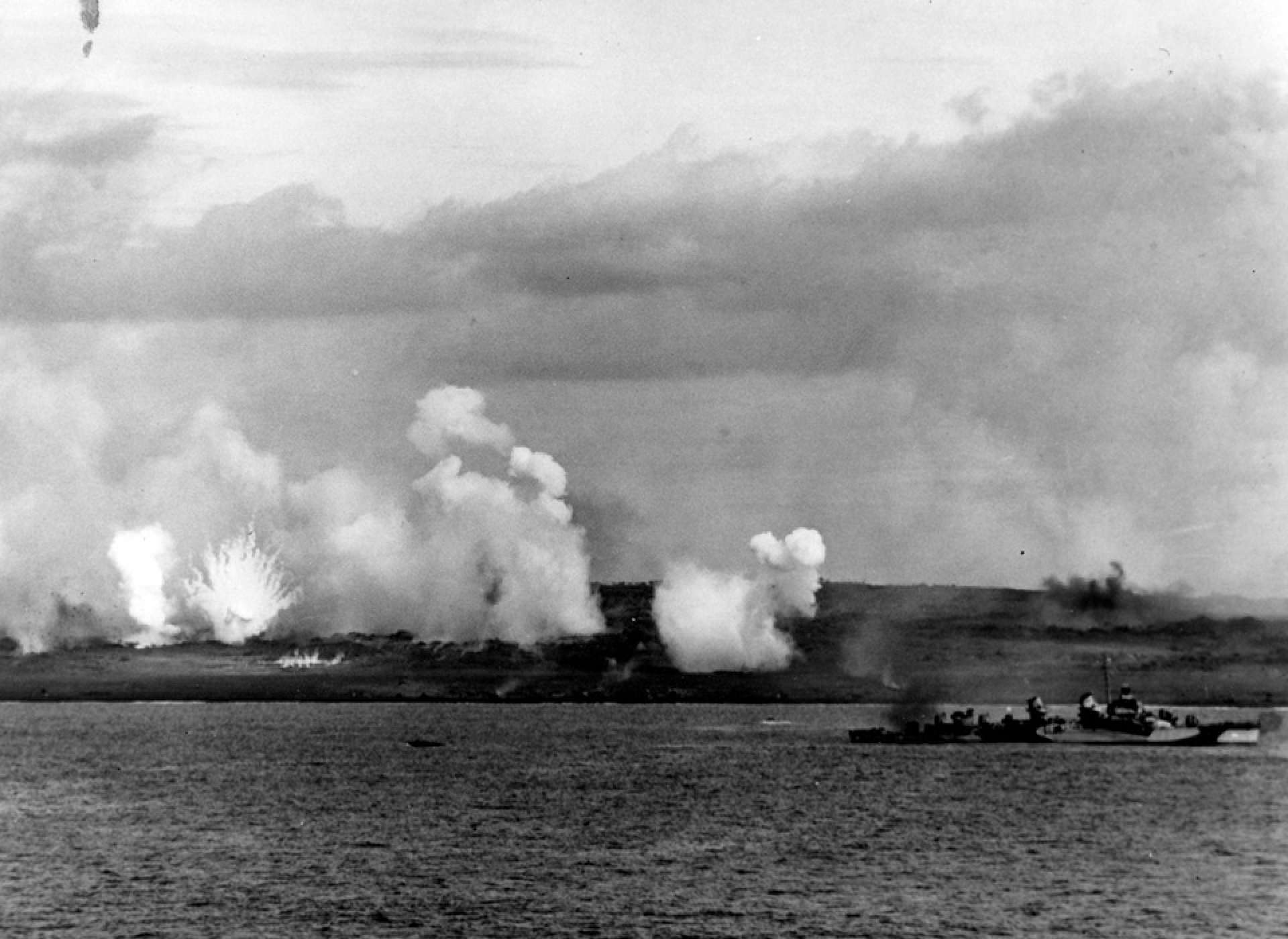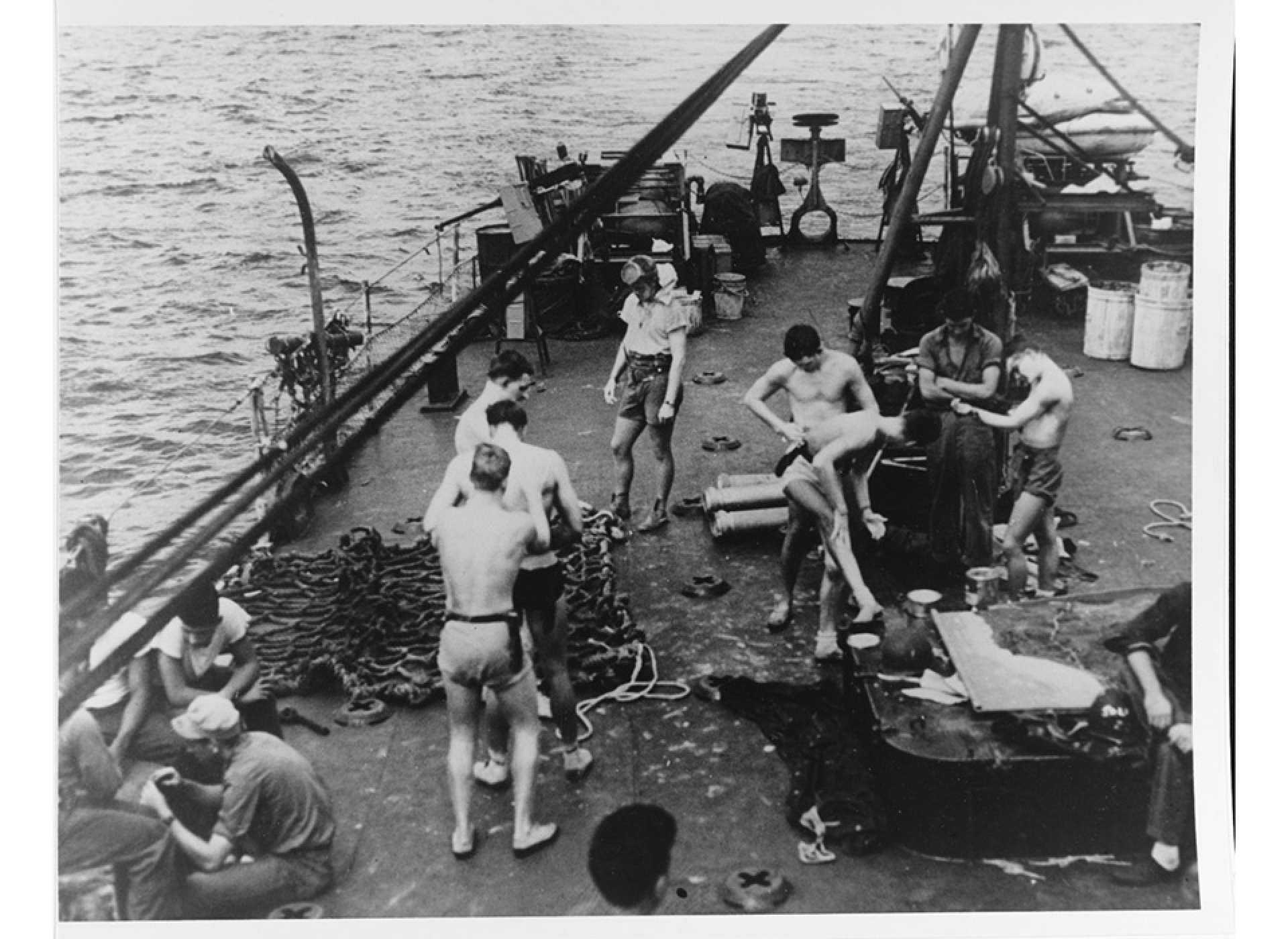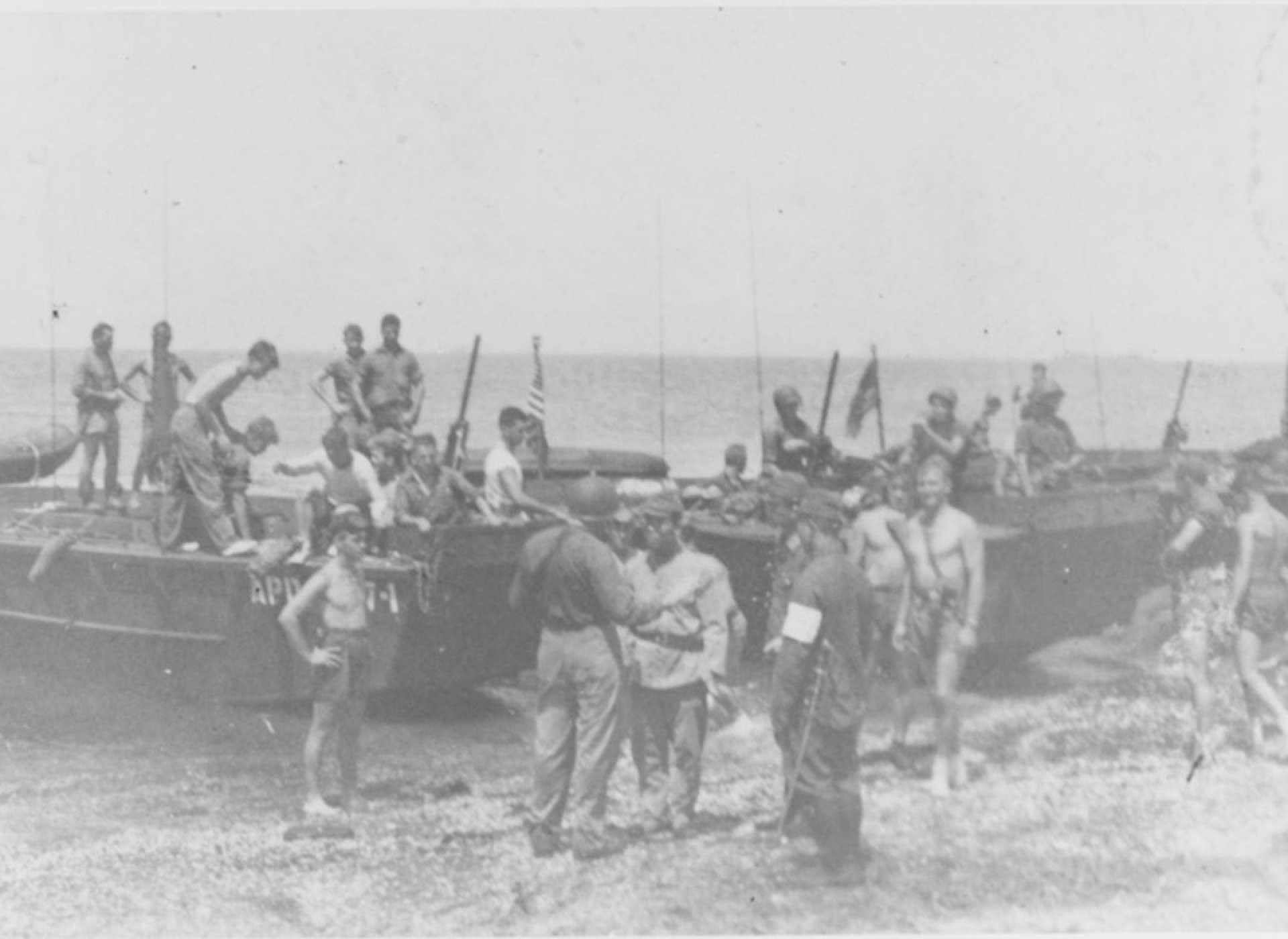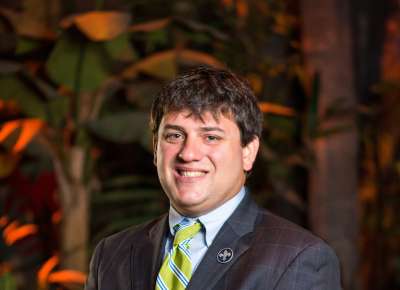Above Image: UDT men blasting coral and rock to form a channel to the beach during the invasion of Morotai on September 15, 1944. Over eight tons of TNT were used in the explosion which scattered debris for 800 yards. Courtesy of Naval History and Heritage Command.
In order for the United States and its Allies to win World War II, necessity became the mother of invention. As critical needs arose in the drive across the Pacific, the Americans had to be able to quickly assess a situation and quickly come up with a solution, often in the field, and often with little to no testing. And even then, when it finally came time to use the solution, they often found that its primary use would actually be more effective in another place. Underwater Demolition Teams, or UDT, were originally used in Europe and would go on to play a role in the Normandy landings on D-Day. However, it would be in the Pacific, and the amphibious landings taking place across the whole theater, where UDT would come into their own.
US Navy commanders got a crash course on what faulty intelligence, a lack of understanding of the tides or knowledge of the current conditions on the beachhead could lead to during the disastrous landings at Tarawa in November 1943. While US Marines riding in LVTs were able to crawl across the reef blocking the entrance to the lagoon on the island of Betio, the following landing waves were in Higgins boats, which required a minimum of five feet of water to pass safely above the reef. Because of inaccurate information regarding the reef and a neap tide which kept the water even lower than usual, the sea height was not sufficient enough for the Higgins boats to cross. This forced the Marines to wade to the island exposed to withering Japanese fire the whole way in, and took heavy casualties as a result.
After the carnage which took place during the Tarawa operation, American amphibious planners realized the critical need for current information on these islands moving forward to avoid needless bloodshed. Here, at this crossroads of the Pacific campaign where the whole idea of amphibious assaults was still being questioned by some, entered an eccentric, but incredibly driven man named Draper Kauffman and his new UDT outfits. Kauffman was someone who was used to overcoming adversity and finding his own way. Although he was a 1933 graduate of the US Naval Academy, he was denied a commission in the regular navy because his eyesight was so poor. Determined to make a difference, he volunteered as an ambulance driver in France in 1940, was captured by the Germans, and eventually released. After his release from German captivity, he ended up in England with a commission in the Royal Navy Reserve. During the Blitz in fall and winter 1940-41, he found himself in the dangerous work of disarming unexploded German bombs and mines. Recalled to duty in the US Navy right before Pearl Harbor, Kauffman set up bomb disposal schools for the US Navy and US Army before taking on his toughest task yet: developing the framework and tactics of the UDT.
After setting up training at Fort Pierce, Florida in July 1943, Kauffman went to work to find the best and brightest the US Navy had to offer and get them to volunteer. Many of the men came from the US Navy’s reserve officer program from several US colleges. Other volunteers came from the Seabees. The men were assigned to six-man teams and were run through a gauntlet of training courses including lectures, small-craft handling, swimming, explosives training, and anything else these men could expect to see in combat. Training was demanding and many men did not complete it. If a man did manage to make it through the course, he was faced with a final 24-hour a day, seven-day week of training. The current day US Navy SEALs famous “hell week” was born out of this arduous final course.
Although a small detachment of UDT had been involved during the Battle of Kwajalein in January 1944, the first large-scale use of UDT would come during the attack on the Mariana Islands and the Battle of Saipan in June 1944. The men would find out the depth of the water inside the reef ringing the island, look for potential landing obstacles, and mark paths for tanks to safely make it ashore without succumbing to deep water. Fishing line and buoys were used to map a grid to be used by the landing forces to get ashore. As if this duty was not hazardous enough, this would be conducted in broad daylight, right under the noses of the Japanese defenders.
-

UDT teams working along Saipan’s reef working from rubber boats, June 1944. Note the fires burning on the beaches. Courtesy of Naval History and Heritage Command.
-

UDT proved critical during the landings on Saipan in June 1944. The men had to clear many mines and obstacles before the attack could take place. Courtesy of Naval History and Heritage Command.
-

UDT members blowing up obstacles off Agat Beach during the invasion of Guam in July 1944. Courtesy of Naval History and Heritage Command.
-

USS Robinson (DD-562) firing its 40mm guns to cover UDT men clearing beach obstacles for the 1st Marine Division at Peleliu in September 1944. Courtesy of Naval History and Heritage Command.
-

Draper Kauffman, smiling at right, being awarded his second Navy Cross for his actions during the Battle of Saipan. Kauffman’s father, Rear Admiral James L. Kauffman, is the one who is pinning the award on Draper’s chest. Draper Kauffman would eventually retire from the US Navy as an admiral like his father. Courtesy of Naval History and Heritage Command.
-

White Phosphorus rounds exploding on the landing beaches during the pre-invasion bombardment of Iwo Jima as UDT prepares for an operation on February 17, 1945. Courtesy of Naval History and Heritage Command.
-

Before conducting operations off Okinawa, UDT members put aluminum paint on themselves to try to throw off Japanese snipers. Courtesy of Naval History and Heritage Command.
-

Members of UDT 21 were the first to accept a sword from a surrendering officer in the Japanese Home Islands. The surrender occurred near Yokosuka Naval Base on August 28, 1945. Courtesy Naval History and Heritage Command.
Despite all the difficulties facing the UDT at Saipan, they accomplished their mission magnificently and played major roles on the islands of Tinian and Guam as well in the Marianas. The UDT would go on be integral to the success of every major US amphibious assault for the remainder of the war. The largest commitment of UDT would come at Okinawa in March and April 1945. Almost 1000 UDT members took part in operations in the frigid waters off the island. By the end of the war, there were 34 total Underwater Demolition Teams, with 21 seeing combat.
Even with the end of the war in August 1945, UDT operations did not cease. UDT 21 was the first US military unit to deploy to Japan and accept the surrender of a Japanese unit in the home islands. UDT continued to operate through the Korean War and into the 1960s and the Vietnam War. However, by this time, their role had changed and they had added an unconventional warfare component to their repertoire. Underwater Demolition Teams, born out of the necessity of World War II, became what we now know today as the US Navy SEALs.
This article is part of an ongoing series commemorating the 75th anniversary of the end of World War II made possible by Bank of America.
James Linn
A New Orleans native, James Linn first became involved with the institution then known as The National D-Day Museum in 2001 as an eighth-grade volunteer on weekends and during the summer. Linn joined The National WWII Museum staff in 2014 and served as a Curator until 2020.
Cite this article:
MLA Citation:
APA Citation:
Chicago Style Citation:
